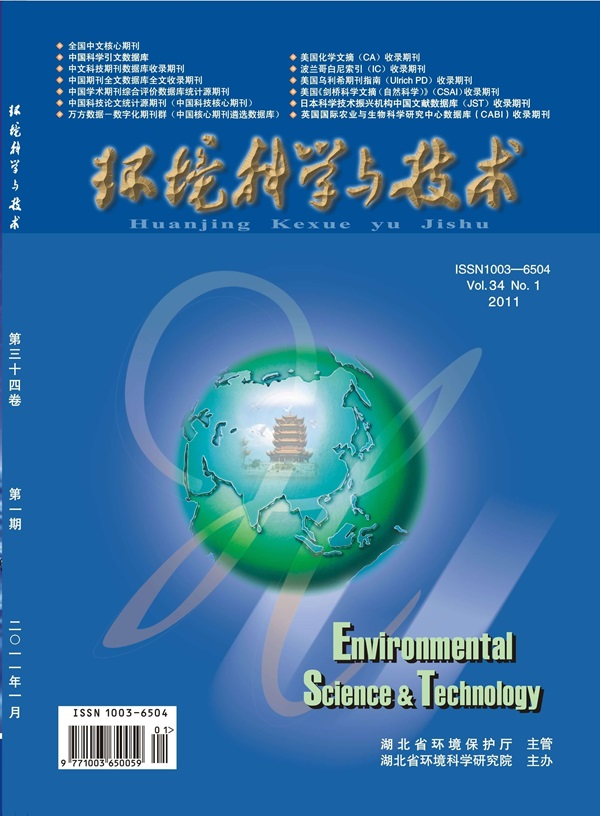苯并三唑和苯并噻唑,母亲和新生儿甲状腺激素和儿童生长:一项纵向队列研究。
IF 10.8
1区 环境科学与生态学
Q1 ENGINEERING, ENVIRONMENTAL
引用次数: 0
摘要
产前暴露于苯并三唑和苯并噻唑(bt)与妊娠并发症有关,但它们对儿童发育的影响尚不清楚。我们研究了这些关联,并在一个由501对母婴组成的中国出生队列中检验了母亲和新生儿甲状腺激素的中介作用。我们发现妊娠早期暴露于2-羟基苯并噻唑(2-OH-BTH)与儿童体重指数(BMI)呈负相关(β = -0.041, 95% CI: -0.077, -0.005)。甲基三唑(TTR) (β = -1.35%, 95% CI: -2.45%, -0.24%)和2-OH-BTH (β = -1.15%, 95% CI: -1.79%, -0.50%)与妊娠早期母体游离甲状腺素(FT4)呈负相关,其中2-OH-BTH暴露与儿童BMI呈负相关的比例为23.53%。此外,妊娠晚期暴露于1-羟基苯并三唑、木基三唑、TTR和2-OH-BTH与新生儿促甲状腺激素水平呈正相关。这些发现表明,产前暴露于BTs,特别是2-OH-BTH,可能通过破坏甲状腺激素稳态而损害儿童早期生长。我们的研究结果为人们对bt的日益关注提供了新的流行病学证据,并强调了将甲状腺功能障碍视为环境暴露与发育结果之间的机制联系的重要性。这突出表明需要加强对公共卫生的关注,并针对这些新出现的污染物采取管制措施。本文章由计算机程序翻译,如有差异,请以英文原文为准。
Benzotriazoles and Benzothiazoles, Maternal and Neonatal Thyroid Hormones, and Childhood Growth: A Longitudinal Cohort Study.
Prenatal exposure to benzotriazoles and benzothiazoles (BTs) has been associated with pregnancy complications, but their effects on childhood development remain unclear. We investigated these associations and examined the mediating role of maternal and neonatal thyroid hormones in a Chinese birth cohort consisting of 501 mother-child pairs. We found that exposure to 2-hydroxy-benzothiazole (2-OH-BTH) in early pregnancy was inversely associated with childhood body mass index (BMI) (β = -0.041, 95% CI: -0.077, -0.005). Both tolyl-triazole (TTR) (β = -1.35%, 95% CI: -2.45%, -0.24%) and 2-OH-BTH (β = -1.15%, 95% CI: -1.79%, -0.50%) were inversely associated with maternal free thyroxine (FT4) in early pregnancy, which mediated 23.53% of the inverse associations between 2-OH-BTH exposure and childhood BMI. Additionally, third-trimester exposure to 1-hydroxy-benzotriazole, xylyl-triazole, TTR, and 2-OH-BTH was positively linked to neonatal thyroid-stimulating hormone levels. These findings suggest that prenatal exposure to BTs, particularly 2-OH-BTH, may impair early childhood growth by disrupting thyroid hormone homeostasis. Our results add new epidemiological evidence to the growing concern about BTs and underscore the importance of considering thyroid disruption as a mechanistic link between environmental exposures and developmental outcomes. This highlights the need for greater public health attention and regulatory measures targeting these emerging contaminants.
求助全文
通过发布文献求助,成功后即可免费获取论文全文。
去求助
来源期刊

环境科学与技术
环境科学-工程:环境
CiteScore
17.50
自引率
9.60%
发文量
12359
审稿时长
2.8 months
期刊介绍:
Environmental Science & Technology (ES&T) is a co-sponsored academic and technical magazine by the Hubei Provincial Environmental Protection Bureau and the Hubei Provincial Academy of Environmental Sciences.
Environmental Science & Technology (ES&T) holds the status of Chinese core journals, scientific papers source journals of China, Chinese Science Citation Database source journals, and Chinese Academic Journal Comprehensive Evaluation Database source journals. This publication focuses on the academic field of environmental protection, featuring articles related to environmental protection and technical advancements.
 求助内容:
求助内容: 应助结果提醒方式:
应助结果提醒方式:


